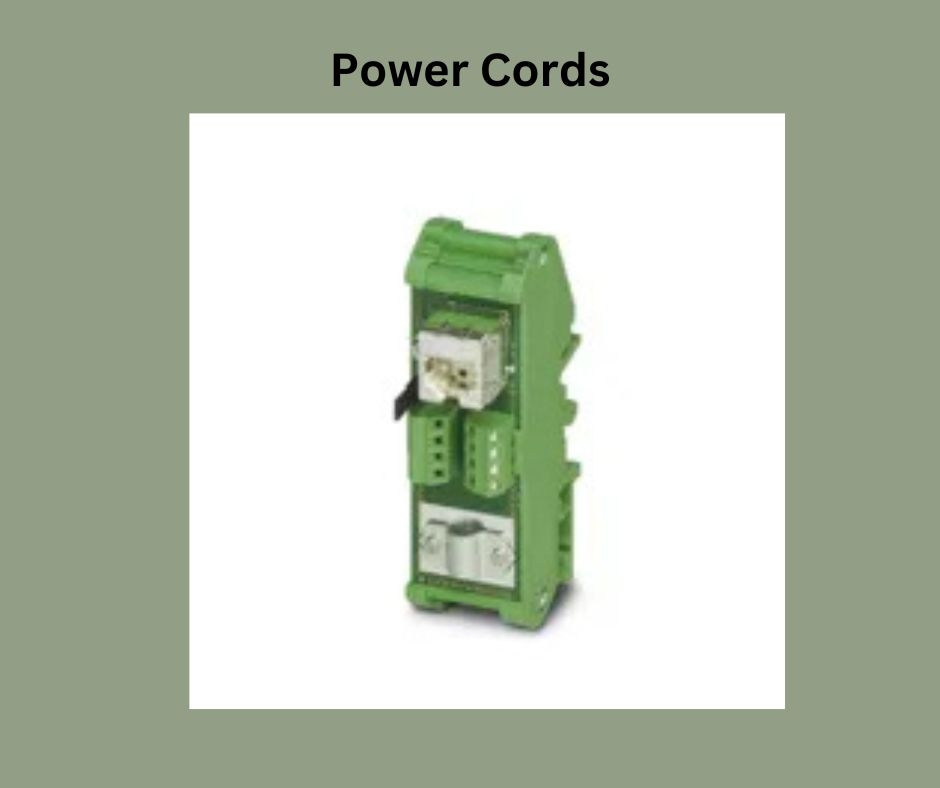Power cords are a vital part of our everyday lives, facilitating the connection between electrical devices and power sources. Whether you’re plugging in your laptop, charging your phone, or powering a large appliance, the power cord ensures your devices receive the energy they need. However, with a wide variety of power cords available, it’s important to understand their types, specifications, and safety precautions to ensure they function effectively and safely.
In this guide, we’ll explore everything you need to know about power cords: their types, what to look for when choosing one, and how to ensure proper use and maintenance.
What Are Power Cords?
A power cord, also known as an electrical cord or cable, is a flexible wire used to conduct electricity from a power source to an electrical device. Power cords are typically made of insulated copper or aluminum wires, encased in a durable outer sheath to prevent damage and provide protection from electrical hazards.
Power cords come in different configurations depending on the device and the type of power source, such as AC (alternating current) or DC (direct current). They consist of several components:
- Plug: The end that connects to the power outlet or socket.
- Cable/Conductors: The internal wires that carry electrical current.
- Insulation: The protective layer that prevents electrical shock and short circuits.
- Receptacle/Connector: The end that connects to the device, appliance, or equipment.
Types of Power Cords
Power cords vary depending on their usage, application, and the electrical standards they need to meet. Some of the most common types include:
1. Standard Power Cords (IEC Cords)
These are the most common power cords found in household and office appliances. The “IEC” (International Electrotechnical Commission) standard categorizes them based on the shape and design of their connectors:
- IEC 60320 C13 to C14: This type is commonly used for computers, monitors, and other electronics.
- IEC 60320 C7 to C8: These cords are used for small devices such as laptop chargers and some household appliances.
These power cords are designed to carry alternating current (AC) and come with varying voltage and amperage ratings.
2. Extension Cords
Extension cords are longer power cords designed to extend the reach of a device from a power source. They can be used for various applications, from powering outdoor equipment to connecting tools in a workshop. It’s essential to choose the right gauge and length to match the power needs of the devices you plan to use.
3. Heavy Duty Power Cords
Heavy-duty power cords are built to handle higher voltage and amperage. These cords are often used in industrial settings, construction sites, and for large appliances. They are thicker, have more robust insulation, and may feature reinforced coatings to withstand rough conditions.
4. Cord Sets for Specific Appliances
Certain appliances or devices require specialized power cords. These include:
- AC/DC Power Adapters: Used for devices that operate on direct current (DC) but are plugged into an AC outlet, such as phone chargers and power bricks.
- RV Power Cords: These are specifically designed for use in recreational vehicles and outdoor equipment, featuring heavy-duty insulation and waterproofing.
How to Choose the Right Power Cord
Selecting the appropriate power cord is crucial for ensuring safety and optimal performance. Here are some key factors to consider:
1. Voltage and Amperage Rating
The most critical consideration when choosing a power cord is its voltage and amperage rating. The power cord must be rated to handle the electrical load of the device it is powering. If the power cord is under-rated, it could overheat, resulting in potential fire hazards.
- Voltage: Ensure that the cord matches the voltage of the electrical outlet and the device. For example, most household appliances in the United States run on 120V AC, while heavy machinery might require 240V AC.
- Amperage: The amperage rating indicates how much current the cord can safely carry. Check the device’s power consumption and ensure the cord can handle that load.
2. Length of the Cord
The length of the power cord can affect both convenience and performance. A longer cord offers more flexibility in positioning your device or appliance. However, longer cords also introduce higher resistance, which could lead to voltage drops. When choosing a power cord, try to pick one that is long enough to meet your needs without excess slack.
3. Cord Gauge
The thickness of the wire in a power cord is called the gauge. A lower gauge number (e.g., 12 AWG) means a thicker cord, while a higher gauge (e.g., 18 AWG) represents a thinner one. A thicker cord can carry more current and is ideal for high-power appliances.
- 12-16 AWG: Suitable for heavy-duty or industrial equipment.
- 18-20 AWG: Best for lightweight devices and household appliances.
4. Type of Insulation
The insulation material in a power cord plays a significant role in its durability and safety. Common materials include:
- PVC: The most common insulation type, offering durability and flexibility for general-use cords.
- Rubber: Provides added flexibility and is more resistant to abrasion and moisture, making it ideal for outdoor use.
- Thermoplastic Elastomer (TPE): Often used for high-temperature applications due to its resistance to heat.
5. Plug and Connector Types
Ensure that the plug and connector of the power cord match the device you are using. Some devices may require a three-prong grounded plug for safety, while others may only need a two-prong ungrounded connection.
- Three-Prong Plugs: Essential for grounded devices, offering extra protection against electrical shocks.
- Two-Prong Plugs: Common for lower-power devices without grounding requirements.
Power Cord Safety Tips
While power cords are designed to be safe, improper use or maintenance can lead to hazards. To ensure safety, follow these guidelines:
1. Inspect Cords Regularly
Before using any power cord, inspect it for damage. Look for signs of fraying, exposed wires, or scorch marks, and replace any damaged cords immediately. Using a damaged cord increases the risk of electrical shock, short circuits, and fire hazards.
2. Avoid Overloading Circuits
Never plug too many devices into a single power strip or extension cord. Overloading circuits can cause overheating, leading to fires or equipment damage. Always check the power ratings of your devices and the cords you’re using to ensure they are compatible.
3. Keep Cords Organized and Untangled
Ensure that cords are kept neatly and untangled to avoid tripping hazards and prevent the risk of cord damage. Use cable ties or clips to organize cords and avoid placing them under heavy furniture or in high-traffic areas.
Conclusion
Power cords are an essential yet often overlooked component of modern life. Whether you’re using them for personal electronics, household appliances, or industrial machinery, understanding their specifications and ensuring proper use is crucial for safety and efficiency. By selecting the right power cord, maintaining it properly, and using it in accordance with its intended purpose, you can enjoy reliable performance without compromising safety.
At Tejara Direct, we offer a wide selection of high-quality power cords suitable for various applications. From heavy-duty industrial power cords to standard household cables, our products are designed to meet the highest safety and performance standards. Choose Tejara Direct for your power cord needs, and power your devices with confidence!






